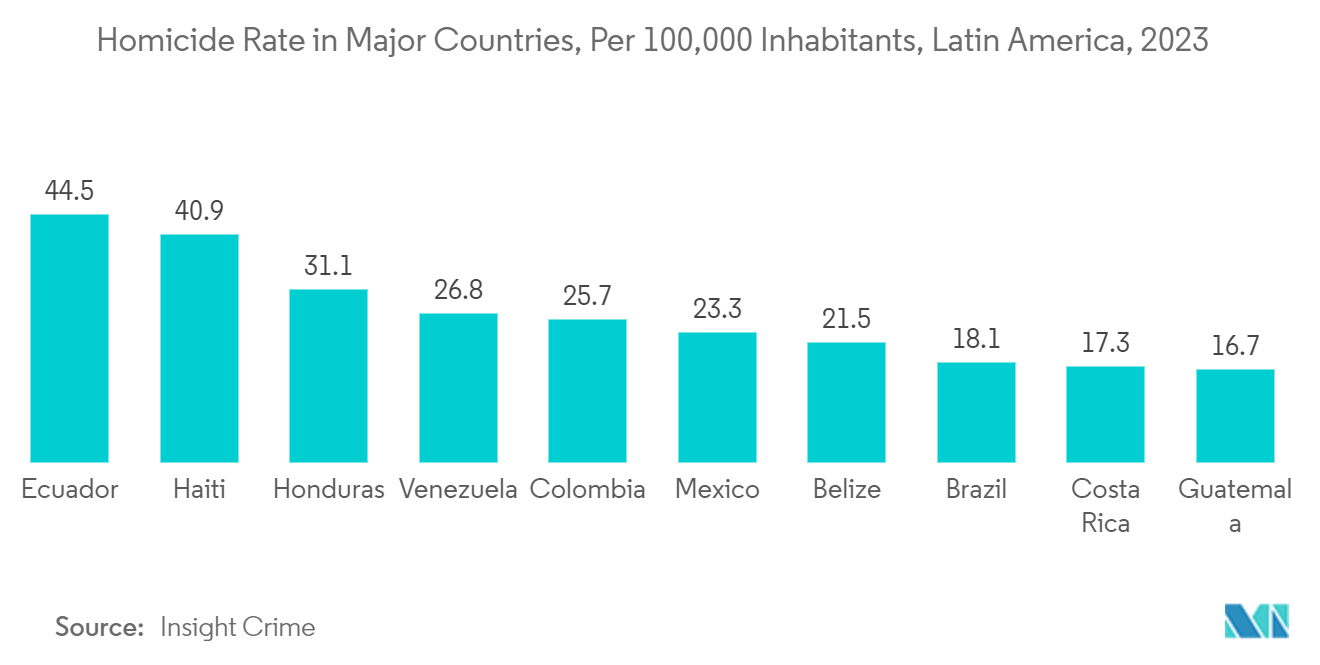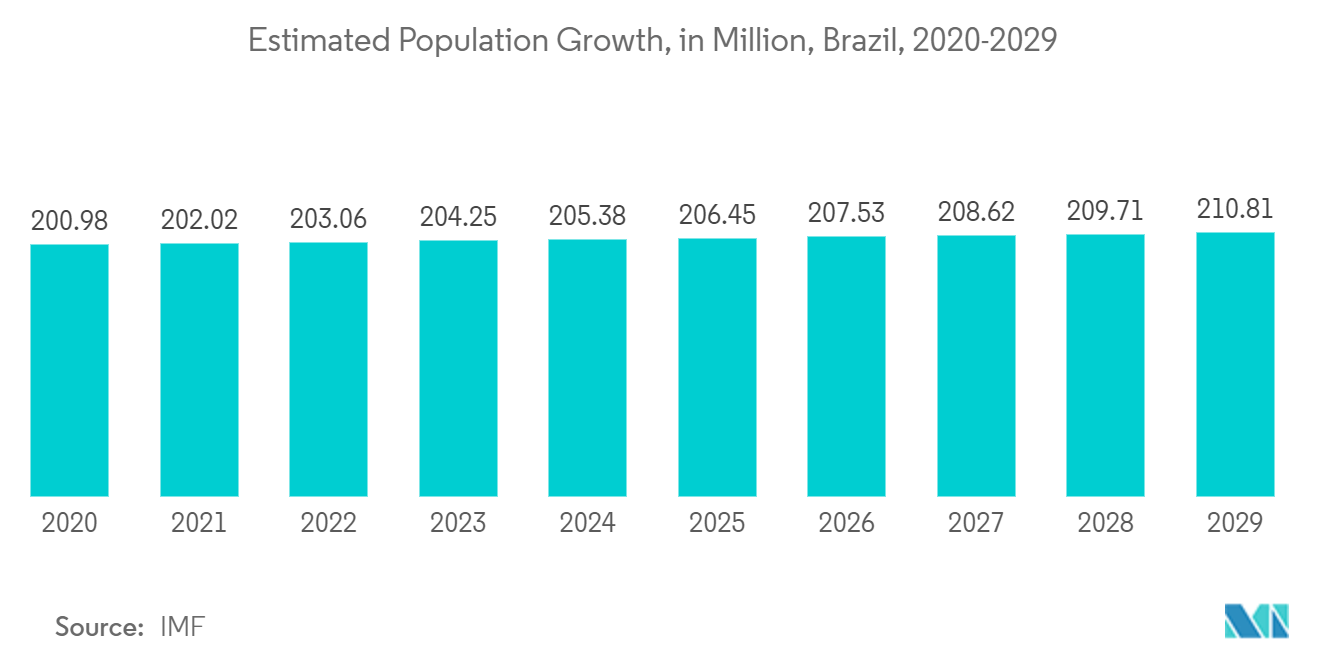Market Trends of Latin America Surveillance IP Cameras Industry
Government Segment to Hold a Significant Market Share
- Crime and violence remain paramount concerns for Latin American households. The IMF reports that, despite representing a smaller portion of the global population, the region is home to nearly half of the world's intentional homicide victims. Latin America's average homicide rate far surpasses that of other emerging markets and developing economies. Notably, within Latin America, Central America emerges as the epicenter of violence. Furthermore, insecurity has escalated, particularly in select areas of the region.
- In 2023, Insight Crime, a non-profit think tank focusing on organized crime in Latin America and the Caribbean, reported that countries such as Ecuador, Haiti, Honduras, and Venezuela had the highest homicide rates in the region. Conversely, El Salvador boasted the lowest rate, standing at 2.4 homicides per 100,000 residents. Such trends are anticipated to drive opportunities in the studied market.
- Amid rising crime rates, numerous Latin American governments are proactively implementing measures, such as deploying cutting-edge surveillance cameras in key public areas. This strategic move aims to bolster the growth prospects of the surveillance market. The Brazilian government has unveiled ambitious plans to roll out extensive surveillance camera networks in prominent cities, including Sao Paulo and Rio de Janeiro.
- Other countries are also mirroring such initiatives. In Mexico, the government has been steadily deploying surveillance cameras. By the close of 2024, the aim is to have a minimum of 80,000 cameras in place. Alongside, the nation has introduced panic buttons at key sites. Moreover, a central command center, complemented by seven regional dispatch centers, now oversees the surveillance network with human operators.

Brazil to Hold a Significant Market Share
- Brazil, one of Latin America's largest nations, boasts a significant landmass and population. In 2023, the IMF reported Brazil's population at 204.25 million, with projections exceeding 210 million by 2029. With its expansive population and territory, Brazil places a premium on surveillance and security, fostering an environment conducive to the market's growth.
- Urbanization in Brazil has been on the rise. World Bank data shows that in 2023, 87.79% of Brazilians lived in urban areas, up from 86.04% in 2016. Given the dense population in urban centers, surveillance cameras are crucial for maintaining law and order and responding to emergencies, making them a key driver for the market's growth.
- Moreover, Brazil has experienced significant infrastructure growth in recent years. This surge is fueled by a growing population, urbanization, and increased foreign direct investments (FDIs) in industries. These factors are boosting the need for infrastructure, including commercial and residential buildings and transportation systems. Consequently, the demand for surveillance cameras, especially IP cameras, is rising, given the need for enhanced security measures.
- Recently, the Brazilian government announced a BRL 1 trillion (almost USD 200 billion) investment plan. This initiative, spanning the next four years, primarily targets infrastructure, energy, and transportation. The overarching goal is to revitalize economic growth and bolster employment rates in the nation.
- Furthermore, the rising crime rate in the country is another major factor that is anticipated to drive opportunities in the studied market. For instance, according to the Citizen Council for Public Safety and Penalty Justice, in 2023, Salvador was the leading city in Brazil in terms of the number of homicides, followed by cities like Recife, and Fortalenza, among others.


